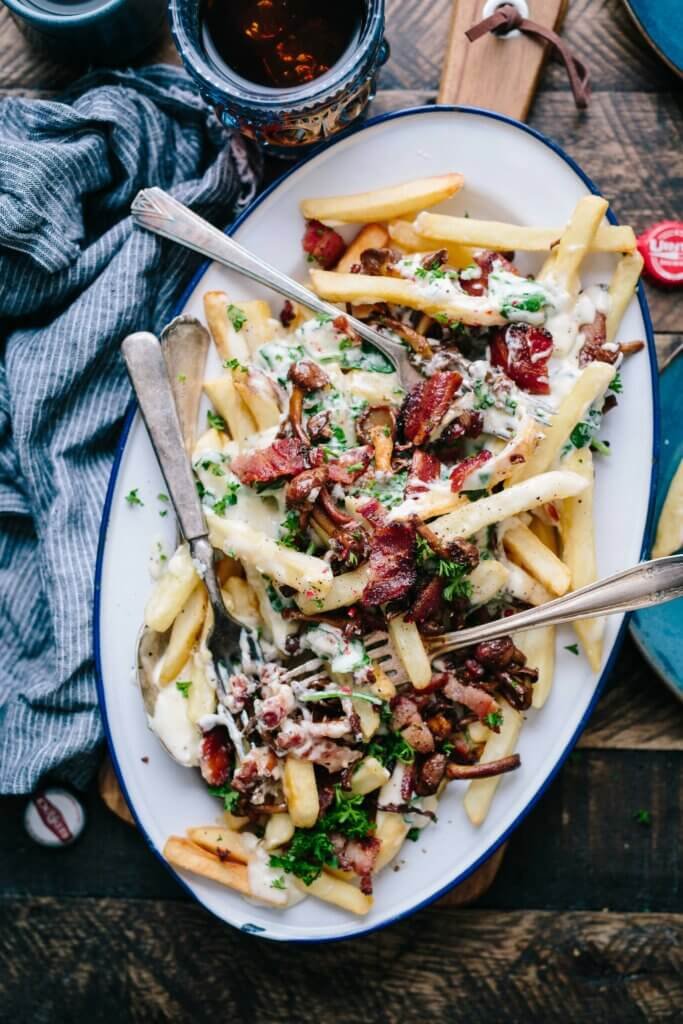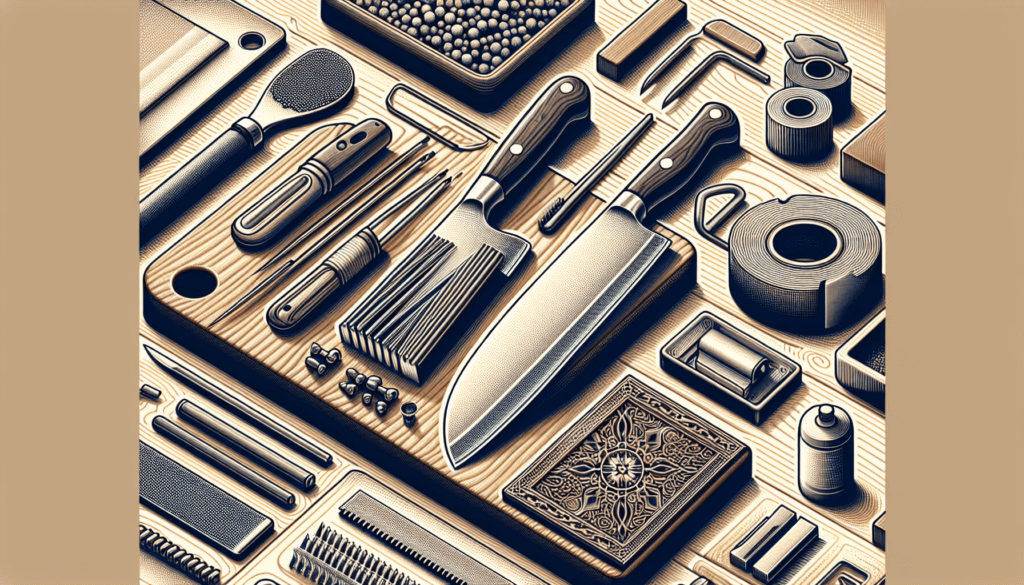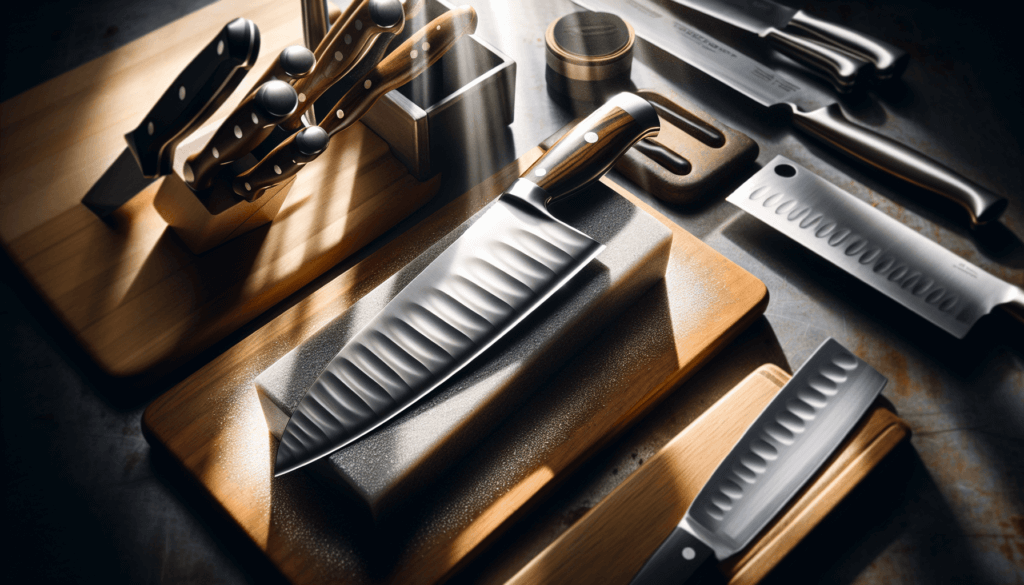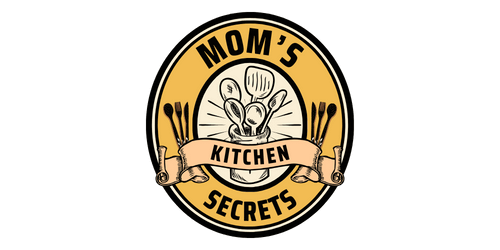Have you ever struggled with dull kitchen knives that just can’t seem to slice through anything smoothly? If so, you’re not alone. In this article, you will discover the best ways to keep your kitchen knives sharp, ensuring that your cutting tasks are effortless and efficient. From proper storage to regular sharpening techniques, we’ve got you covered. Say goodbye to frustratingly dull knives and hello to effortlessly sharp ones!
Hone Your Knife Regularly
Use a honing rod
Honing your knife regularly is essential to maintain its sharpness and effectiveness in the kitchen. One of the best tools for this task is a honing rod, also known as a sharpening steel. A honing rod is a long, cylindrical rod made of steel or ceramic material. To hone your knife using a honing rod, hold the rod upright with one hand and place the knife blade against the rod at a 20-degree angle. Gently slide the knife down the entire length of the rod, from the base to the tip, while maintaining the same angle. Repeat this process on both sides of the knife blade several times. Honing your knife with a honing rod helps to realign the blade and restore its sharpness.
Proper honing technique
While using a honing rod is crucial, it is equally important to follow the proper honing technique to ensure effective results. Firstly, it is essential to hold the honing rod securely with one hand and the knife with the other. As you slide the knife down the rod, apply gentle pressure while maintaining a consistent angle. It is recommended to repeat this process for about 5-10 times on each side of the knife blade. Remember to use smooth, controlled movements and avoid rushing through the process. Regular honing not only improves the cutting performance of your knife but also extends its lifespan.
Avoid Cutting on Hard Surfaces
Use a cutting board
When it comes to preserving the sharpness of your kitchen knives, using a cutting board is paramount. Cutting on hard surfaces such as plates or countertops can cause your knife blades to dull quickly. A cutting board provides a softer and more forgiving surface that reduces stress on the blade. Choose a cutting board made of wood, bamboo, or plastic as they are knife-friendly materials. Avoid using glass cutting boards as they can damage the blade’s edge. Additionally, using a cutting board helps to prevent cross-contamination and keeps your kitchen hygienic.
Avoid cutting on plates or countertops
While using a cutting board is important, it is equally crucial to avoid cutting directly on plates or countertops. Plates have a hard surface that can cause the knife blade to dull, and countertops, especially those made of stone or concrete, can cause even more damage. Cutting on hard surfaces not only affects the sharpness of your knife but can also damage the surface itself. To protect both your knife and your countertops, always use a cutting board for food preparation.

Store Knives Properly
Use a knife block
Properly storing your knives not only keeps them organized but also helps to protect their sharpness. One of the best ways to store knives is by using a knife block. Knife blocks are usually made of wood and have small slots or compartments to hold each knife securely. Storing knives in a block ensures that the blades are protected and prevents them from coming into contact with other utensils, which could cause nicks or dulling. Additionally, knife blocks keep your countertop tidy and make it easy to access the right knife when needed.
Use a knife sheath or guard
If you prefer not to use a knife block or if you need to store your knives in a drawer or on a magnetic strip, using a knife sheath or guard is a great alternative. Knife sheaths are protective covers that fit over the blade, while knife guards are plastic or rubber inserts that cover the blade and prevent accidental cuts. These tools help to keep the blade of your knife protected and prevent it from coming into contact with other objects, both guarding its sharpness and ensuring safety when handling the knife.
Hand Wash and Dry Immediately
Avoid dishwasher
Cleaning your knives in a dishwasher may seem convenient, but it can significantly impact their sharpness and overall quality. The high heat, strong detergents, and vigorous water jets in a dishwasher can lead to the deterioration of the blade’s edge and even cause the handle materials to warp or crack. To maintain the sharpness and longevity of your knives, it is best to hand wash them.
Use mild detergent
When hand washing your knives, it is important to use a gentle, mild detergent. Avoid using harsh or abrasive cleaners that can damage the blade or handle. Gently scrub the blade and handle with a soft sponge or cloth, paying close attention to any food particles or stains. Rinse the knife thoroughly to ensure all the soap residue is removed. Once washed, immediately dry the knife with a clean and dry towel to prevent water spots or corrosion. Proper hand washing and immediate drying will help keep your knives in excellent condition.

Sharpen Knives When Needed
Use a water stone
No matter how well you maintain your knives, sharpening them at regular intervals is essential to retain their cutting performance. One of the best tools for sharpening knives is a water stone, also known as a whetstone or sharpening stone. A water stone is a rectangular block made of abrasive material, usually silicon carbide or aluminum oxide. To sharpen your knife using a water stone, soak the stone in water for a few minutes, place it on a non-slip surface, and hold the knife at a 20-degree angle. With light pressure, move the knife blade back and forth across the stone in a sweeping motion, starting from the base and working towards the tip. Repeat this process several times, alternating between both sides of the blade. Finally, rinse the knife thoroughly to remove any residue from the sharpening process.
Use a manual or electric sharpener
If you prefer a more convenient and efficient way of sharpening your knives, using a manual or electric sharpener is an excellent option. Manual sharpeners have built-in slots with different levels of abrasiveness, allowing you to achieve the desired sharpness. Electric sharpeners, on the other hand, feature rotating abrasive wheels that quickly and easily sharpen the blade. Both manual and electric sharpeners are designed to remove small amounts of metal from the blade, restoring its edge. However, it is important to follow the manufacturer’s instructions for each specific sharpener to ensure safety and effectiveness.
Avoid Using Knives for Inappropriate Tasks
Use a dedicated tool for opening packages
While it may be tempting to grab a knife to open packages, doing so can pose significant risks to both yourself and the knife. Knives are primarily designed for cutting food and should not be used as makeshift tools. Instead, use a dedicated tool such as scissors or a box cutter to safely open packages. By using the appropriate tool, you avoid accidentally damaging the blade or injuring yourself.
Avoid using knives as screwdrivers
Similarly, using knives as screwdrivers is also an inappropriate task that can lead to damage to the knife. Knives are not designed to withstand the pressure and torque required for tasks such as turning screws. When you use a knife as a screwdriver, you risk bending or breaking the blade, damaging the handle, or even injuring yourself. Keep a proper set of screwdrivers handy and use them for their intended purpose.

Avoid Cutting Frozen Foods
Allow food to thaw
Cutting frozen foods with a regular kitchen knife can be challenging and even detrimental to the blade’s sharpness. Rather than attempting to cut through frozen foods directly, allow them to thaw naturally or use other thawing methods such as placing them in the refrigerator. Thawing the food properly not only makes it easier to cut but also prevents unnecessary strain on the knife blade.
Use serrated knives for frozen foods
When you do need to cut through frozen foods, it is best to use serrated knives. Serrated knives have small, jagged teeth that grip and cut through the tough texture of frozen foods more effectively. The serrations act as miniature saws, creating a back-and-forth motion that easily breaks through frozen ice crystals and fibers. Using serrated knives for frozen foods can help maintain the sharpness of your regular kitchen knives and prevent damage to their edges.
Maintain a Proper Cutting Technique
Use appropriate cutting motion
To preserve the sharpness of your knives and ensure consistent and precise cuts, it is crucial to use the appropriate cutting motion. Hold the knife with a firm grip, using your index finger and thumb to guide the blade. Apply even downward pressure as you smoothly and steadily move the knife through the food, using a rocking or slicing motion depending on the desired cut. Avoid pressing forcefully or sawing through the food, as these motions can damage the knife’s edge and diminish its effectiveness.
Avoid twisting or prying with the knife
Twisting or prying with a knife is a common mistake that can quickly dull the blade and even cause it to chip or break. Knives are not designed for lateral forces or excessive twisting. Instead, use dedicated tools or proper techniques for tasks that involve twisting or prying, such as using a bottle opener or a pair of pliers. By avoiding these actions, you protect the edge of your knife and prolong its sharpness.

Avoid Storing Knives Loose in Drawers
Use a knife organizer or tray
Simply tossing your knives into a drawer can lead to unnecessary wear and tear on the blade, handle, and other utensils in the drawer. To properly store your knives, consider using a knife organizer or tray. These storage solutions have individual slots or compartments to keep each knife securely in place, protecting them from coming into contact with other items. A knife organizer or tray not only keeps your knives organized but also helps maintain their sharpness and prevents any accidental injuries when reaching into the drawer.
Separate knives from other utensils
When storing knives in a drawer, it is crucial to keep them separated from other utensils. Mixing knives with other items can lead to blade damage and makes it more difficult to locate the specific knife you need. To keep your knives in optimum condition, store them separately from other utensils in designated compartments or by using blade guards. This not only protects the sharpness of your knives but also ensures a safe and organized kitchen.
Regularly Inspect and Maintain Knives
Check for damage or loose handles
Regularly inspecting your knives for any signs of damage or loose handles is crucial to their longevity and safety. Check the blade for chips, cracks, or excessive wear, as these can affect its cutting performance. Additionally, ensure that the handle is securely attached without any wiggling or looseness. If you notice any issues with your knives, such as loose screws or damage, it is important to address them promptly to prevent further damage or potential accidents.
Tighten loose screws if applicable
Some knives feature handles that are held in place by screws. Over time, these screws may become loose due to regular use. If you find any loose screws on your knife, use a screwdriver to tighten them. By keeping the handle secure, you prevent unnecessary movement that can affect the knife’s balance and handling. Regularly checking and tightening loose screws helps to ensure that your knife remains in optimal condition.
In conclusion, by following these best practices, you can maintain the sharpness and performance of your kitchen knives. Hone your knife regularly with a honing rod, avoid cutting on hard surfaces, store knives properly, hand wash and dry immediately, sharpen them when needed, avoid using knives for inappropriate tasks, refrain from cutting frozen foods, maintain a proper cutting technique, avoid storing knives loose in drawers, and regularly inspect and maintain your knives. By incorporating these habits into your kitchen routine, you will ensure that your knives remain sharp, safe, and ready to tackle any culinary task. Happy cooking!



